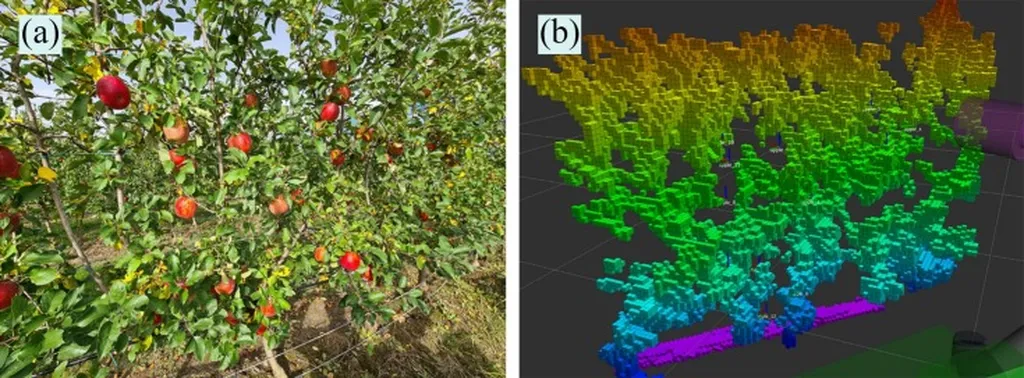In the heart of Beijing, a team of researchers led by Ning Wang from the Key Lab of State Forestry and Grassland Administration for Forestry Equipment and Automation at Beijing Forestry University has developed a groundbreaking method for 3D reconstruction of individual apple trees. Their work, published in *Frontiers in Plant Science* (which translates to *Frontiers in Plant Science* in English), promises to revolutionize the way we approach precision agriculture and tree management.
The method, dubbed BranchMatch, addresses a critical challenge in 3D reconstruction: point cloud registration. This process involves combining point clouds—data sets representing the three-dimensional structure of an object—from multiple viewpoints to create a comprehensive 3D model. Traditionally, this requires high overlap between point clouds, which is time-consuming and computationally expensive. However, BranchMatch changes the game by achieving accurate registration with just two point clouds captured from stations 180° apart.
“BranchMatch leverages key branch segments in a single viewpoint, utilizing their spatial and geometric structure features to perform feature matching and initial rigid-body transformation under low overlap conditions,” explains Wang. This innovative approach not only simplifies the data acquisition process but also significantly reduces computational costs while maintaining high accuracy and reconstruction completeness.
The implications for the agricultural sector are substantial. With BranchMatch, farmers and orchard managers can create detailed 3D models of individual trees, enabling personalized management and precise monitoring. This level of detail can lead to more efficient use of resources, improved yield, and better pest and disease management. As Wang notes, “Our method achieves a registration success rate of 90%, with average rotation and translation errors of 1.93 mrad and 4.33 mm, respectively, and a pointwise error of 2.70 mm.”
Beyond agriculture, the technology has potential applications in forestry and environmental monitoring. Accurate 3D models of trees can aid in assessing forest health, tracking growth patterns, and planning sustainable management practices. The energy sector could also benefit, particularly in biomass energy production, where understanding the structure and volume of trees is crucial for efficient energy conversion.
The research highlights the importance of innovation in agricultural technology. As the global population grows and resources become scarcer, the need for precision and efficiency in agriculture becomes ever more pressing. BranchMatch represents a significant step forward in meeting these challenges, offering a glimpse into a future where technology and agriculture intersect to create sustainable and productive solutions.
In the words of Wang, “BranchMatch significantly reduces computational costs while maintaining registration accuracy and reconstruction completeness, highlighting its efficiency and reliability in individual tree registration.” This breakthrough not only advances the field of agritech but also paves the way for future developments in precision agriculture and beyond. As we look to the future, the potential for such technologies to transform our approach to resource management and environmental stewardship is immense.

